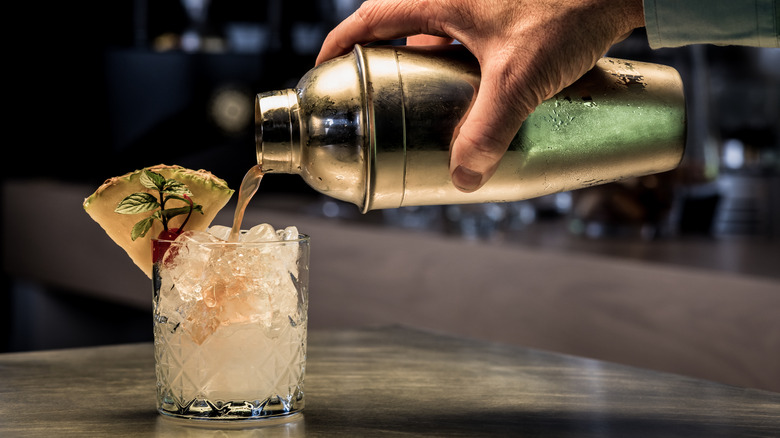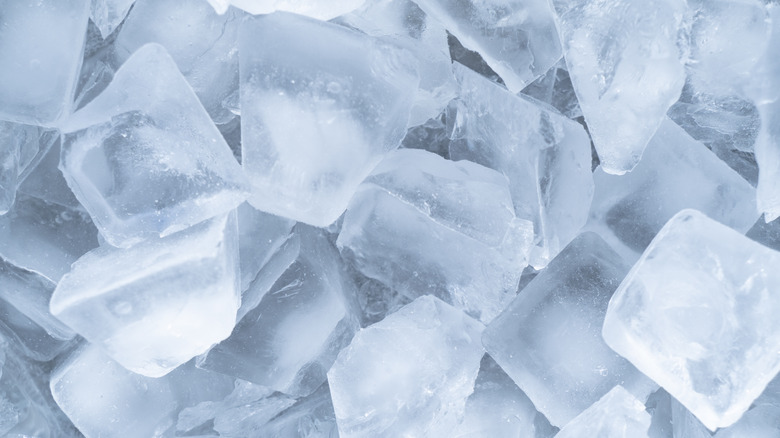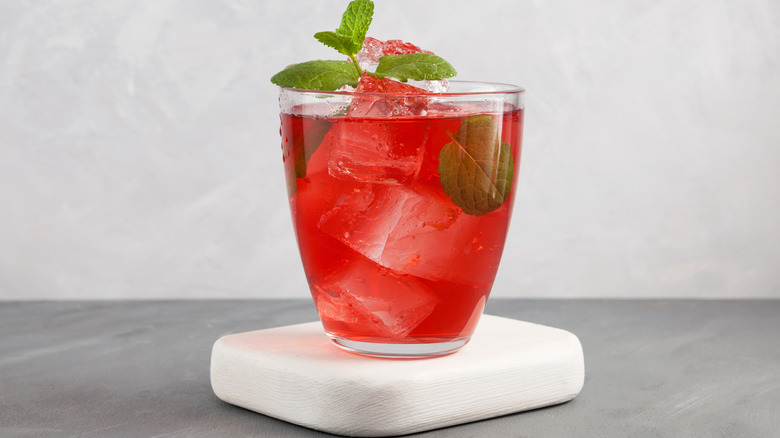Add More Ice To Your Drink To Stop Dilution (Yes, Really)
Ice cubes can be pesky. Sure, they keep a drink cold for a while, but eventually, they melt and dilute the drink. And no one likes a watered-down drink, right? Surprisingly, one solution involves adding more ice to your drink.
Although this method seems counterintuitive, the reasoning behind it makes sense. Adding more ice can cool your drink enough that it doesn't melt, or at least melts so slowly that the dilution is negligible. Of course, not just any ice will do; the size and shape of ice greatly affect cocktails. Crushed ice, for instance, has a large surface area for its mass, so it melts quickly even if used in large quantities. Conversely, larger ice cubes have less surface area, helping them to lose their cold energy more slowly.
In other words, for the best effect, you should fill cold drinks with plenty of ice — and large chunks of it, at that. This combo will keep your drink cold much longer, which is precisely why bartenders frequently use it.
Use dry ice straight from the freezer
While shaking a drink with ice is an excellent way to cool it quickly, this process can also accelerate dilution. This ice has been with your drink since it was at a warmer temperature, which means it's already starting to melt. As such, bartenders usually strain the drink to remove the ice, instead pouring it over fresh ice that hasn't started to melt.
But fresh ice isn't just any ice. Rather, it must also be "dry," or not coated in a layer of water. Whether or not the ice cubes themselves have started to melt, that "wet" water coating will only speed up the dilution of your drink. "Wet" ice may be kept on hand in a bucket at room temperature, meaning the ice itself could very well be warmer despite being present in large amounts, while "dry" ice is fresh from the freezer. The best choice here is (or should be) obvious: use dry.
Clear ice will take much longer to melt
Another important thing to know about ice in cocktails is how the clarity of ice affects melting. The ice cubes you might make in your freezer go through the freezing process relatively quickly, encapsulating any gases or impurities in the water used. As a result, the ice cubes are cloudy in appearance, and their lower density makes them melt faster.
Clear ice, on the other hand, freezes over a longer period. This allows any impurities in the water time to escape, leaving the ice looking crystal-clear and tasting fresher. Moreover, because all those gases have escaped from the ice, the cubes are denser and will melt much more slowly than their cloudy counterparts. Cool, right?
With all this being said, you should really look at your ice cubes the next time you order a cocktail at the bar. Take note of how clear they are, admire their shape, and appreciate how science is keeping your drink cold.



